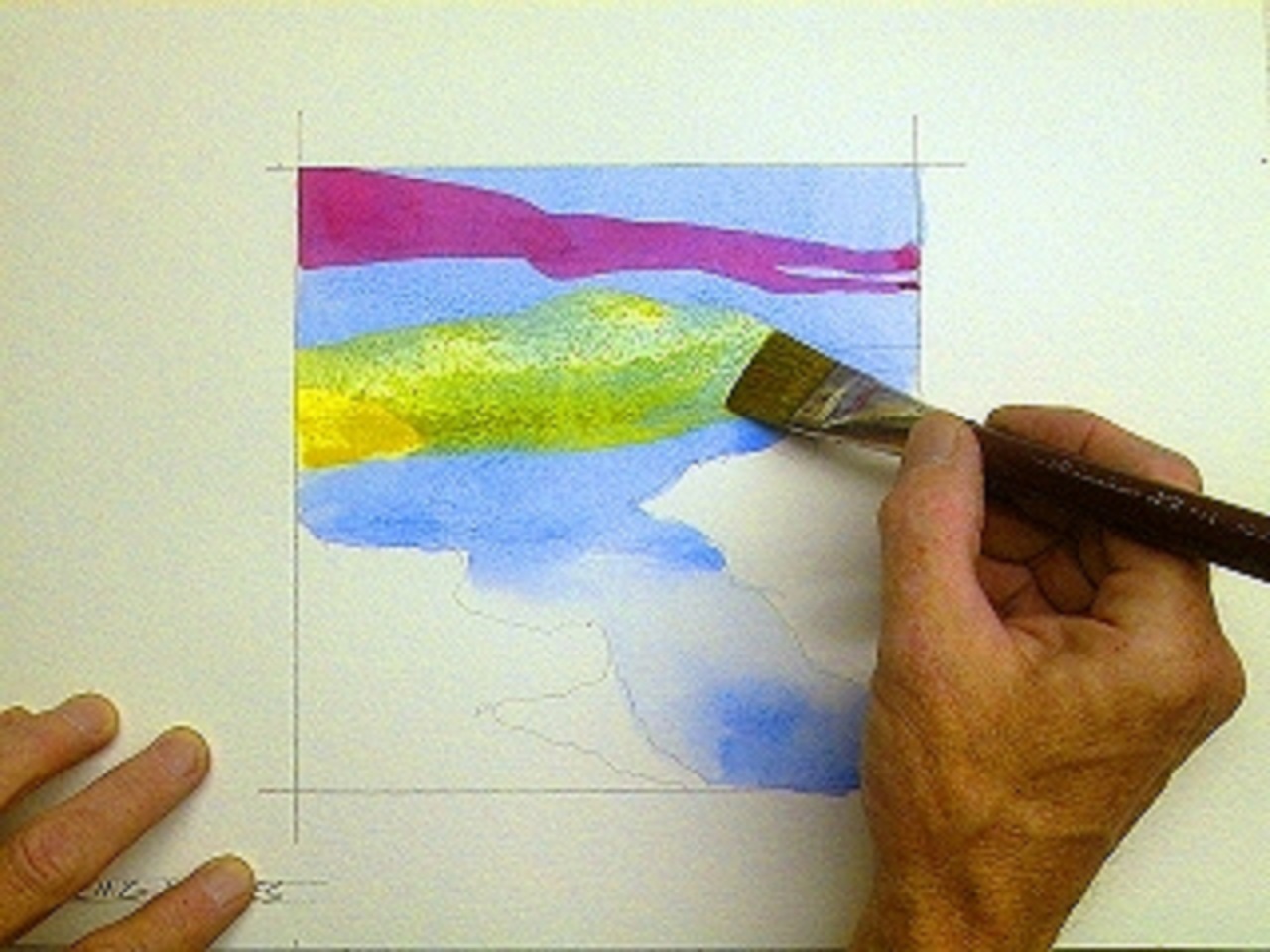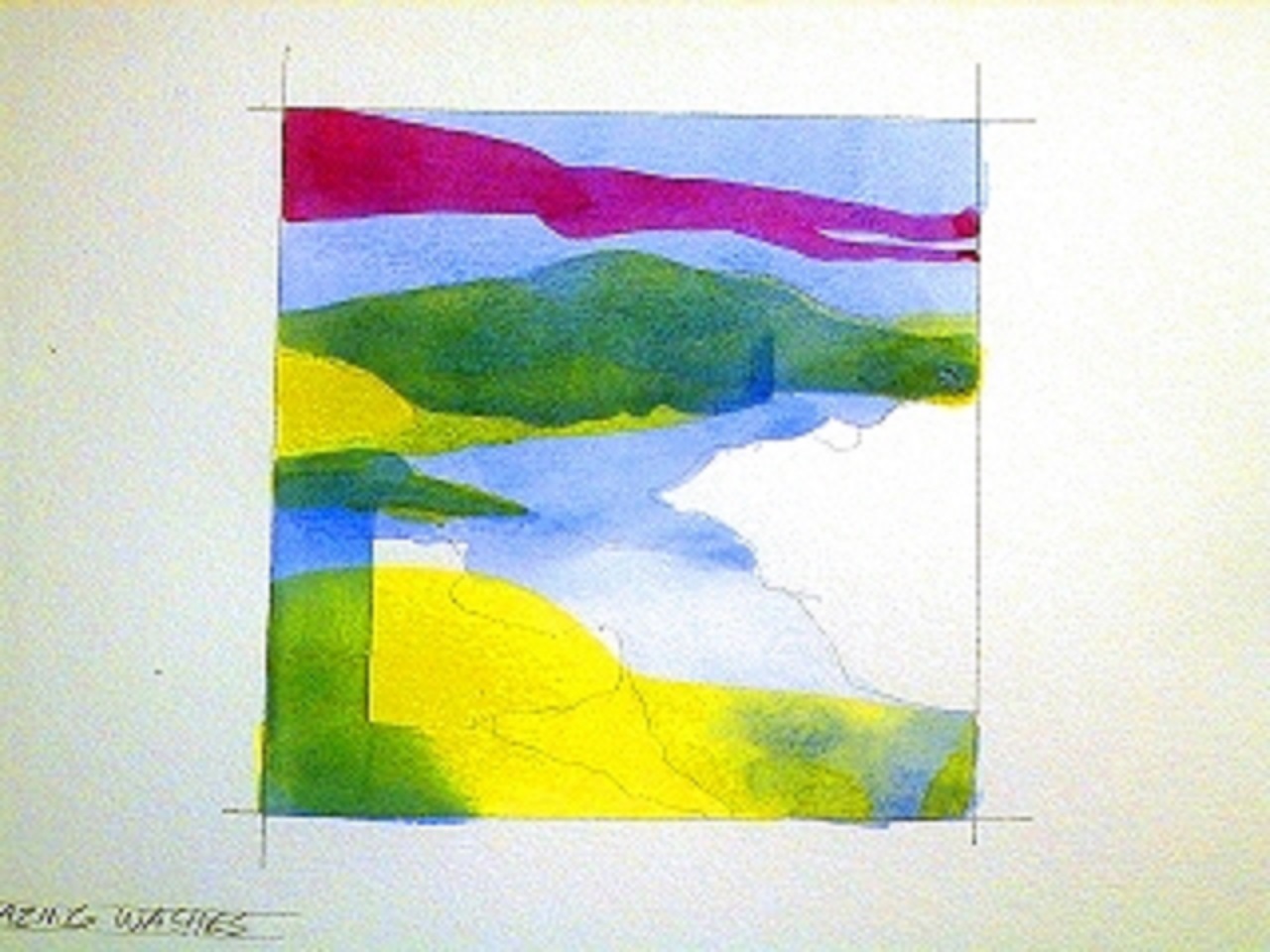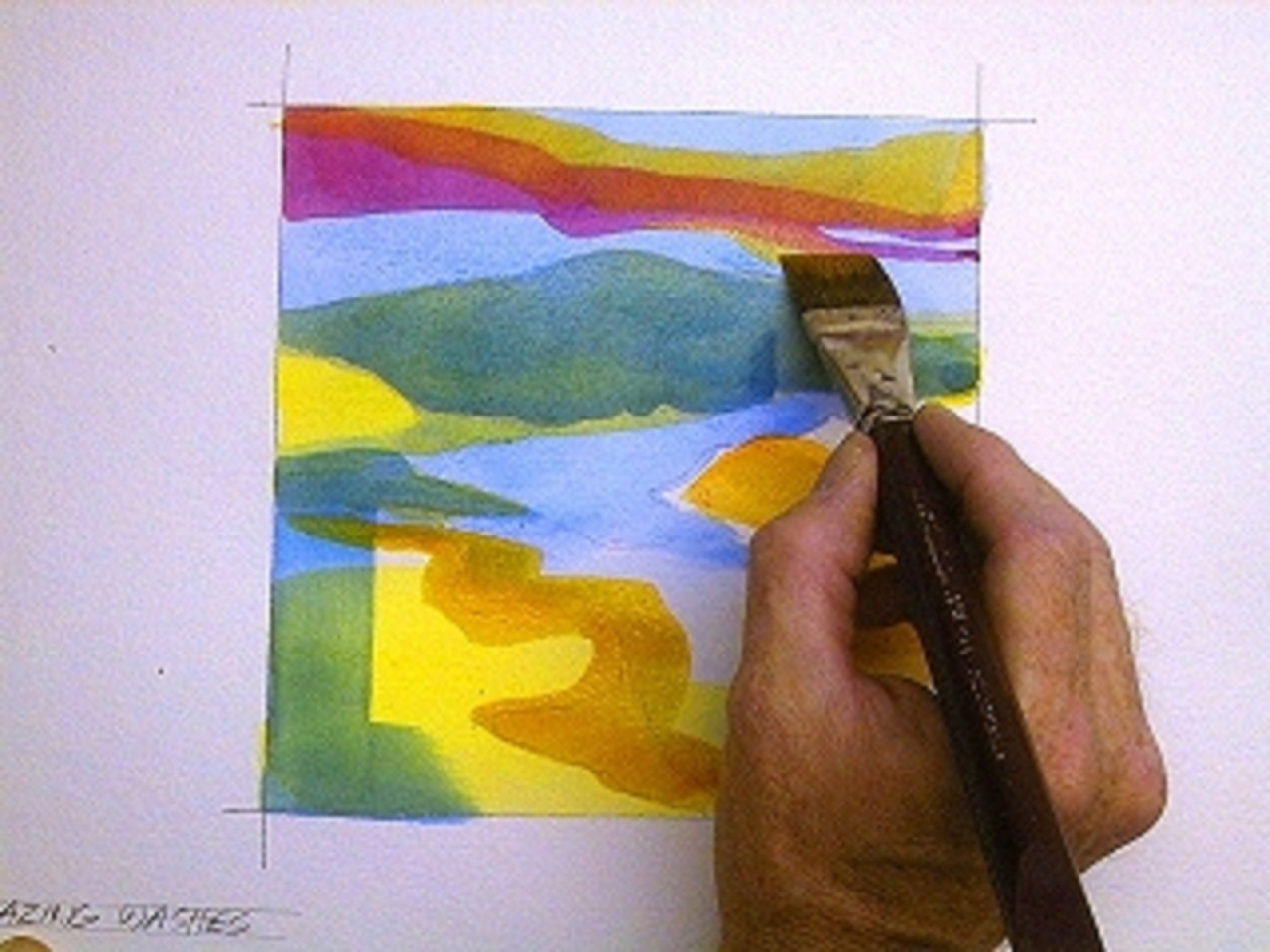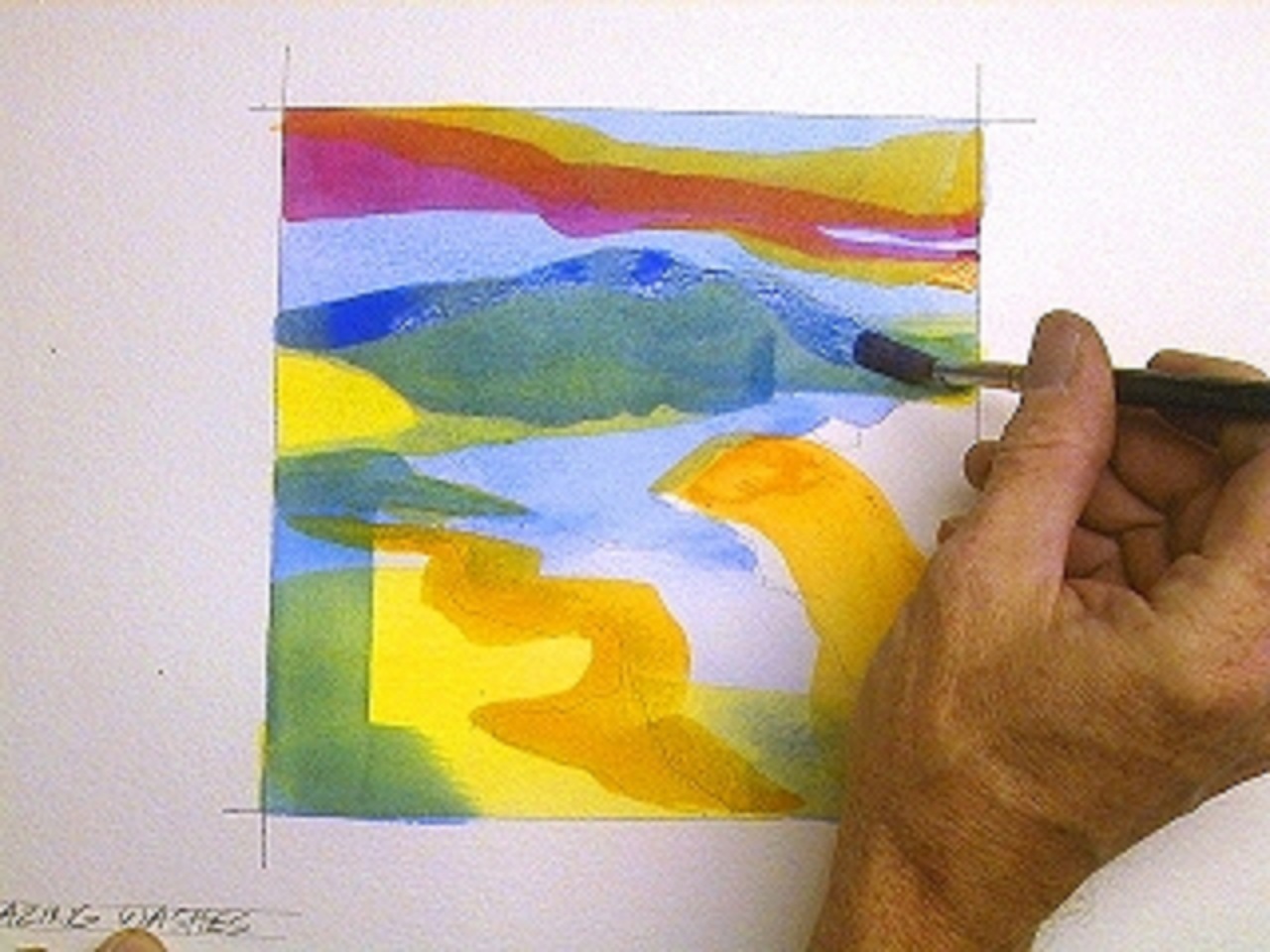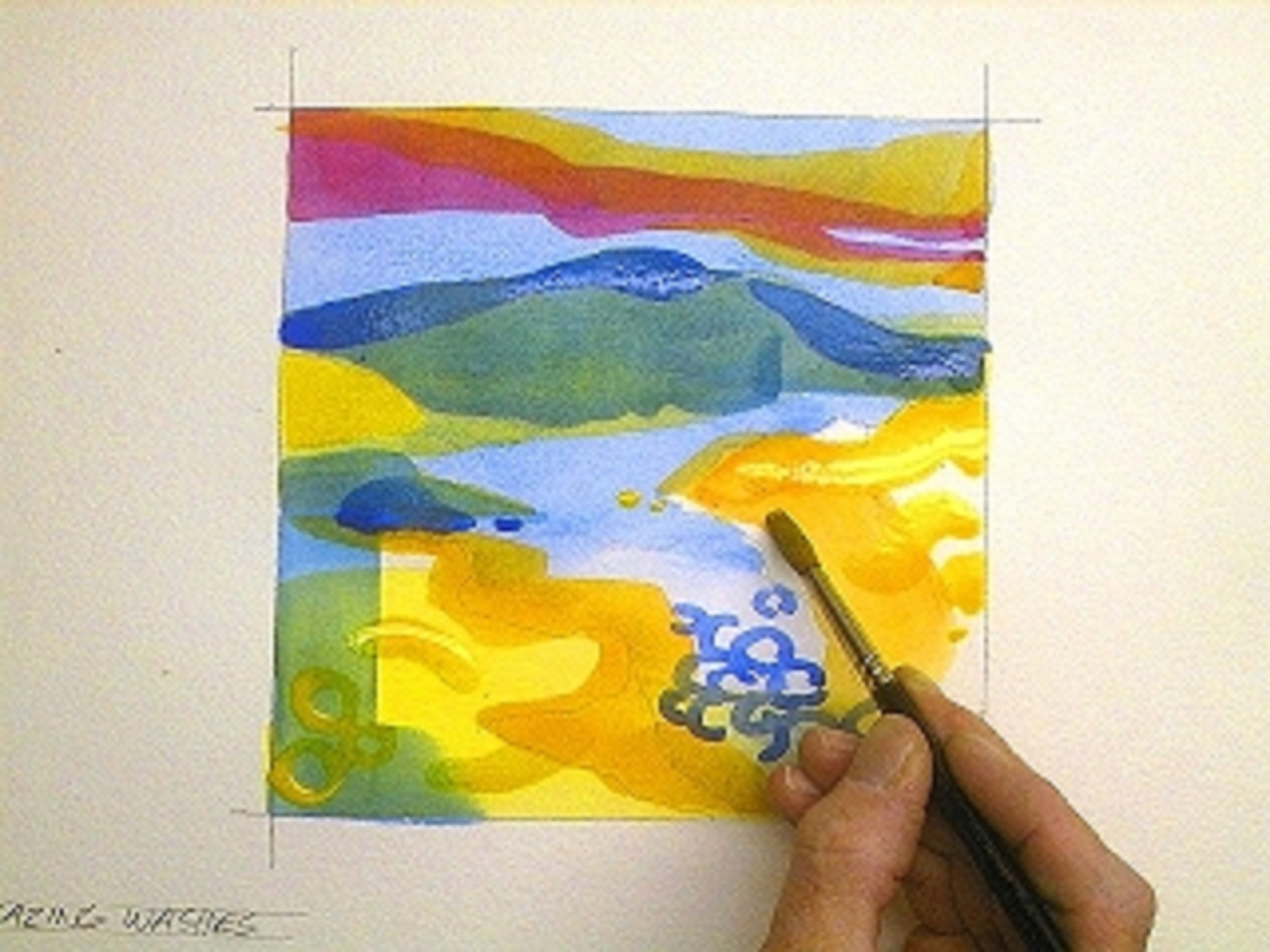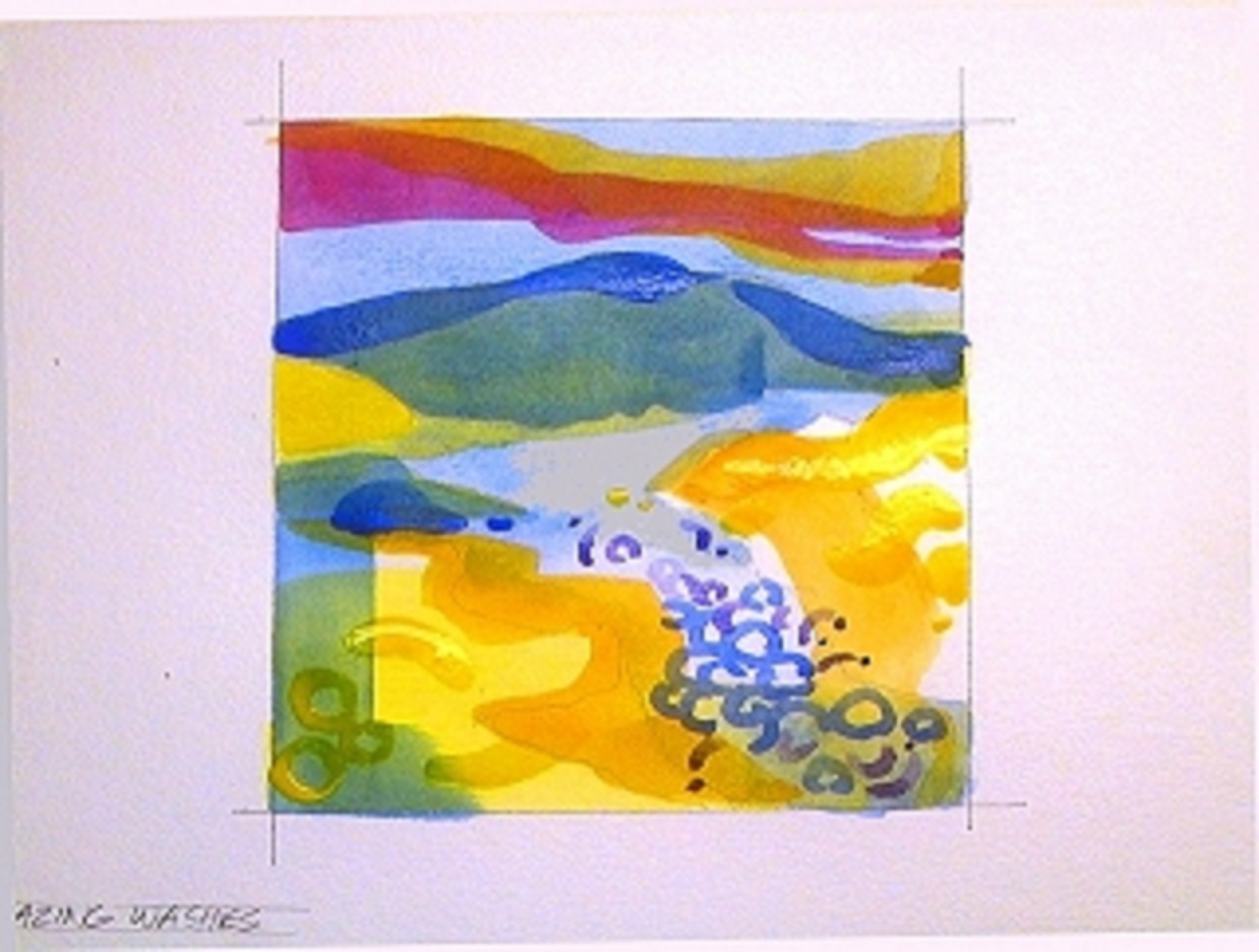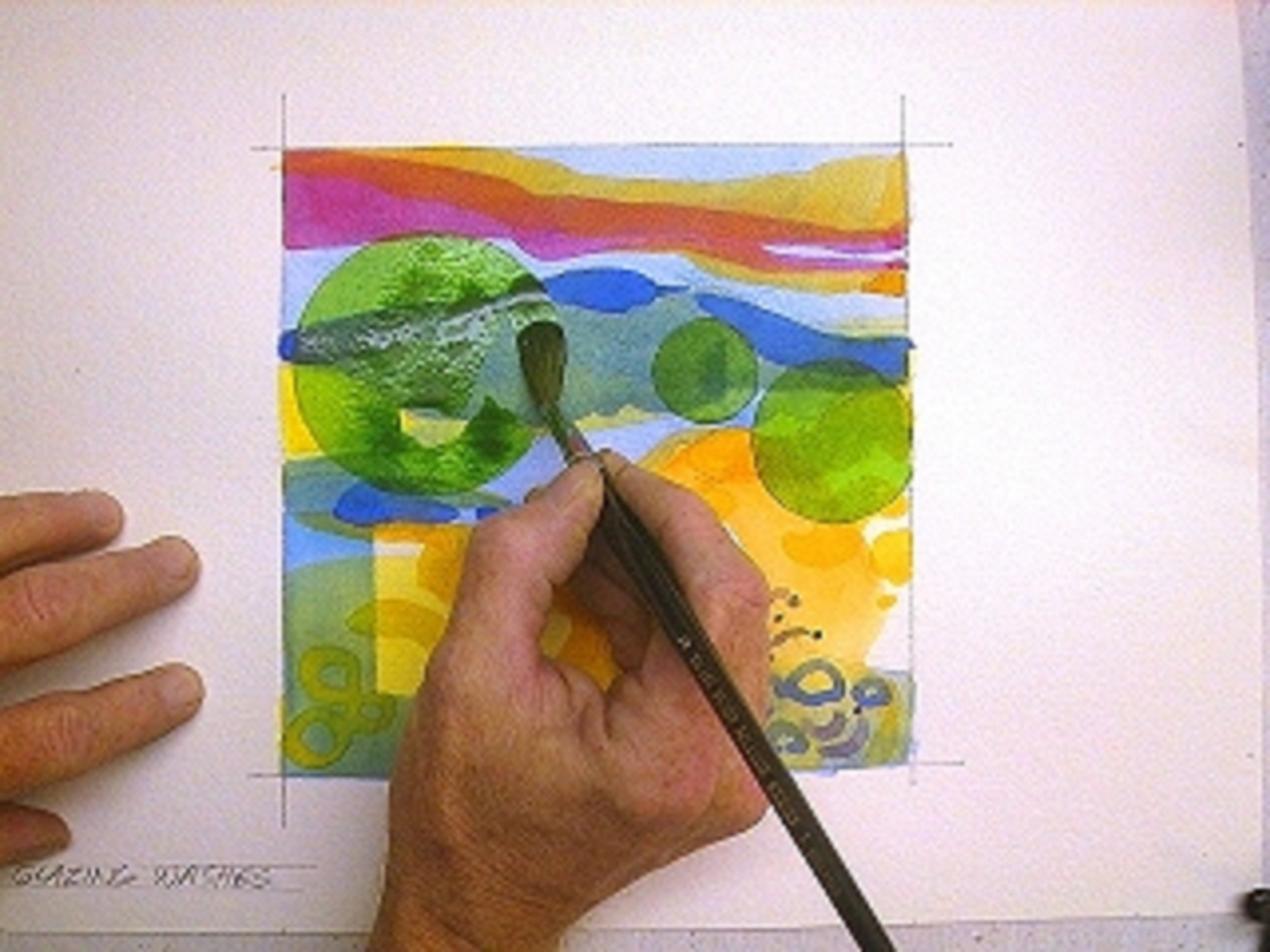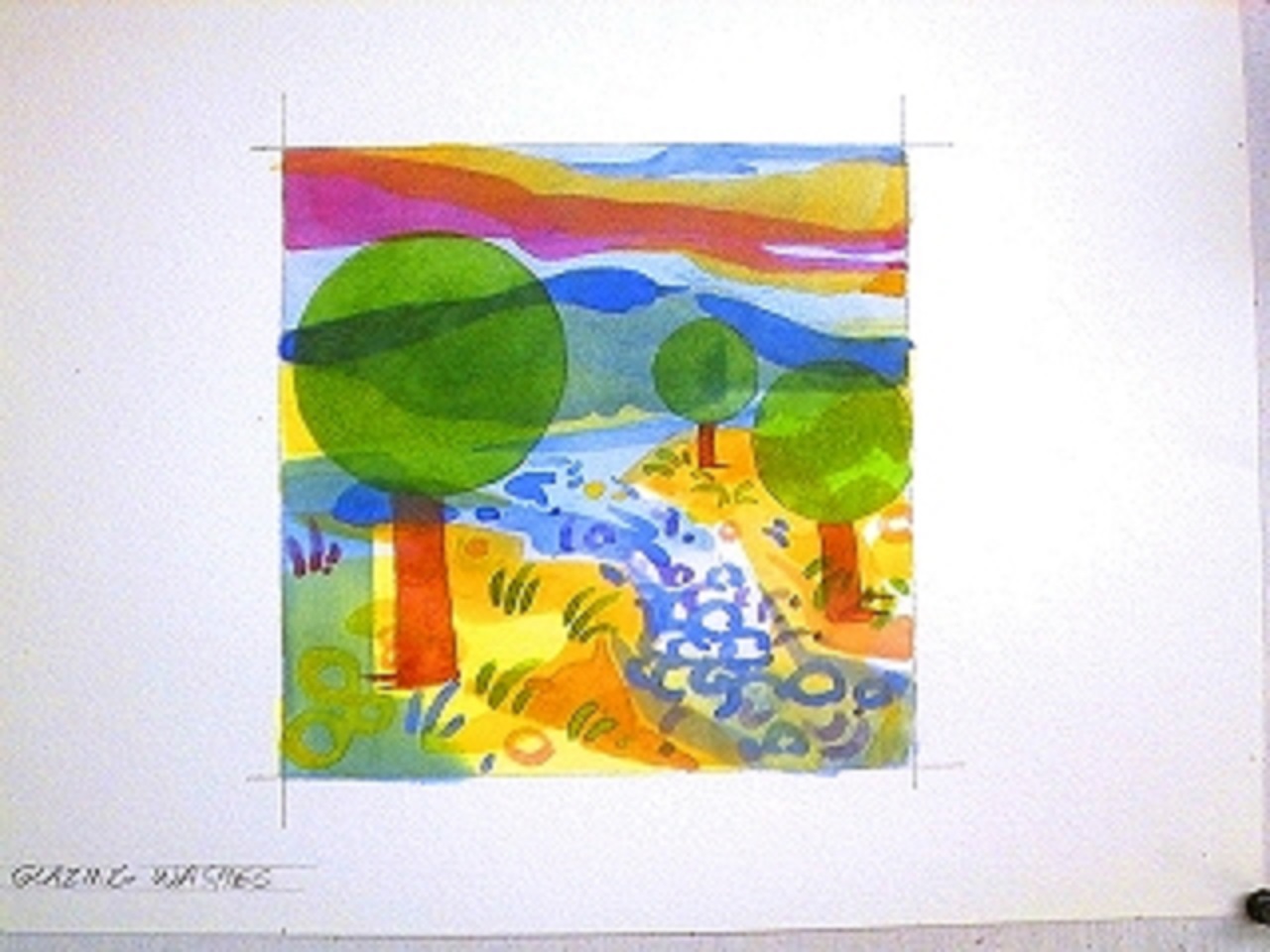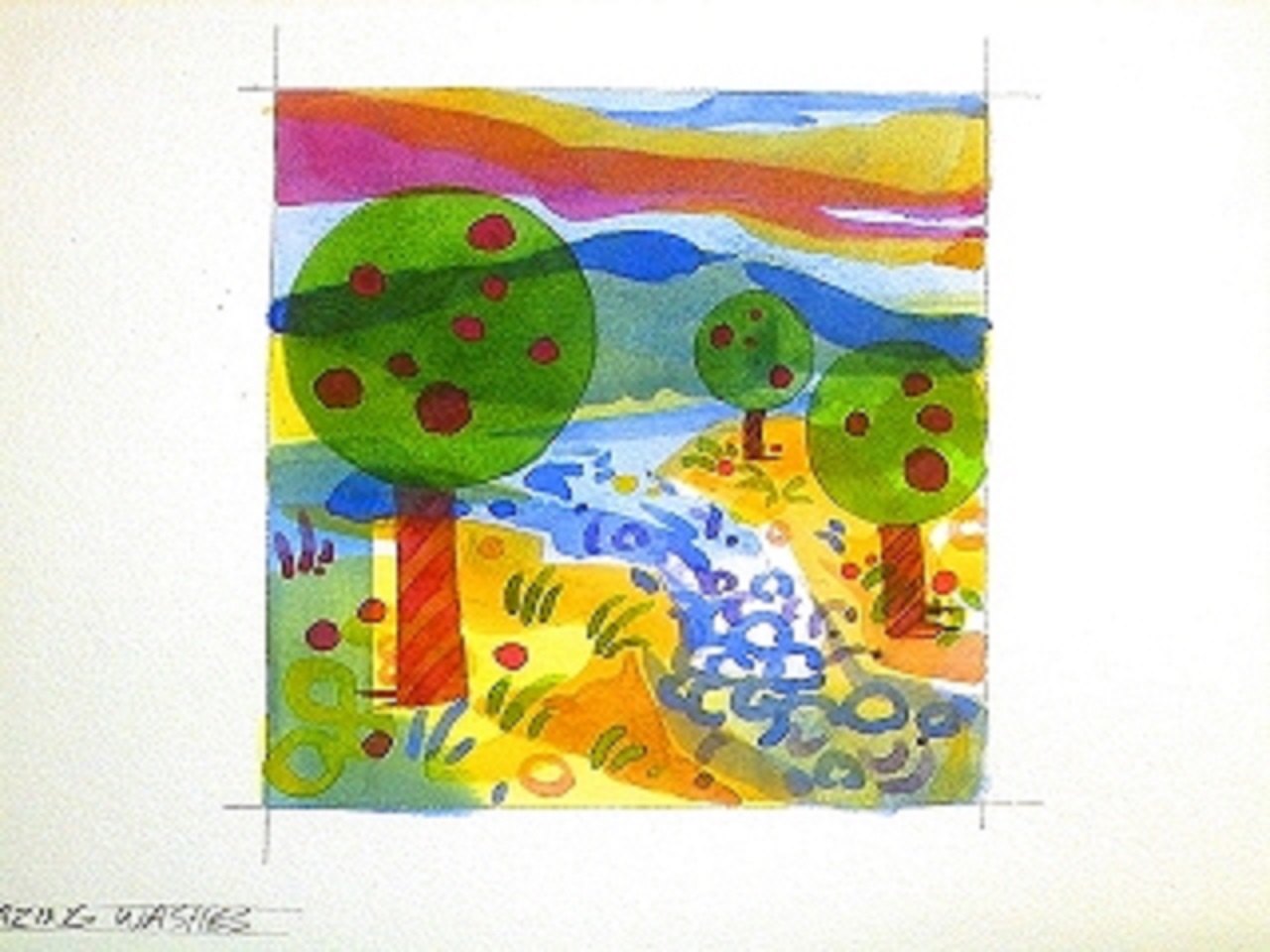A little information about this watercolor technique
To help me demonstrate this watercolor technique, I will improvise a landscape on the fly to show the principles of glazing watercolor washes. MATERIALS: Arches #140 CP watercolor paper, Grumbacher 1" flat red sable, Kalish Kolinsky Red Sable #8 round, Kolonok #4 flat Kolinsky red sable, Winsor & Newton Series 820 #8 Round, and a Kolonok #4 round Kolinsky red sable brush. A blow-dryer. COLORS (various manufacture): Cadmium Yellow Light, Cadmium Yellow Medium, Cadmium Orange, Cadmium Red Medium, Permanent Rose, Dioxazine Purple, Cobalt Blue, Ultramarine Blue and Sap Green. Colors chosen are transparent and semi-transparent. 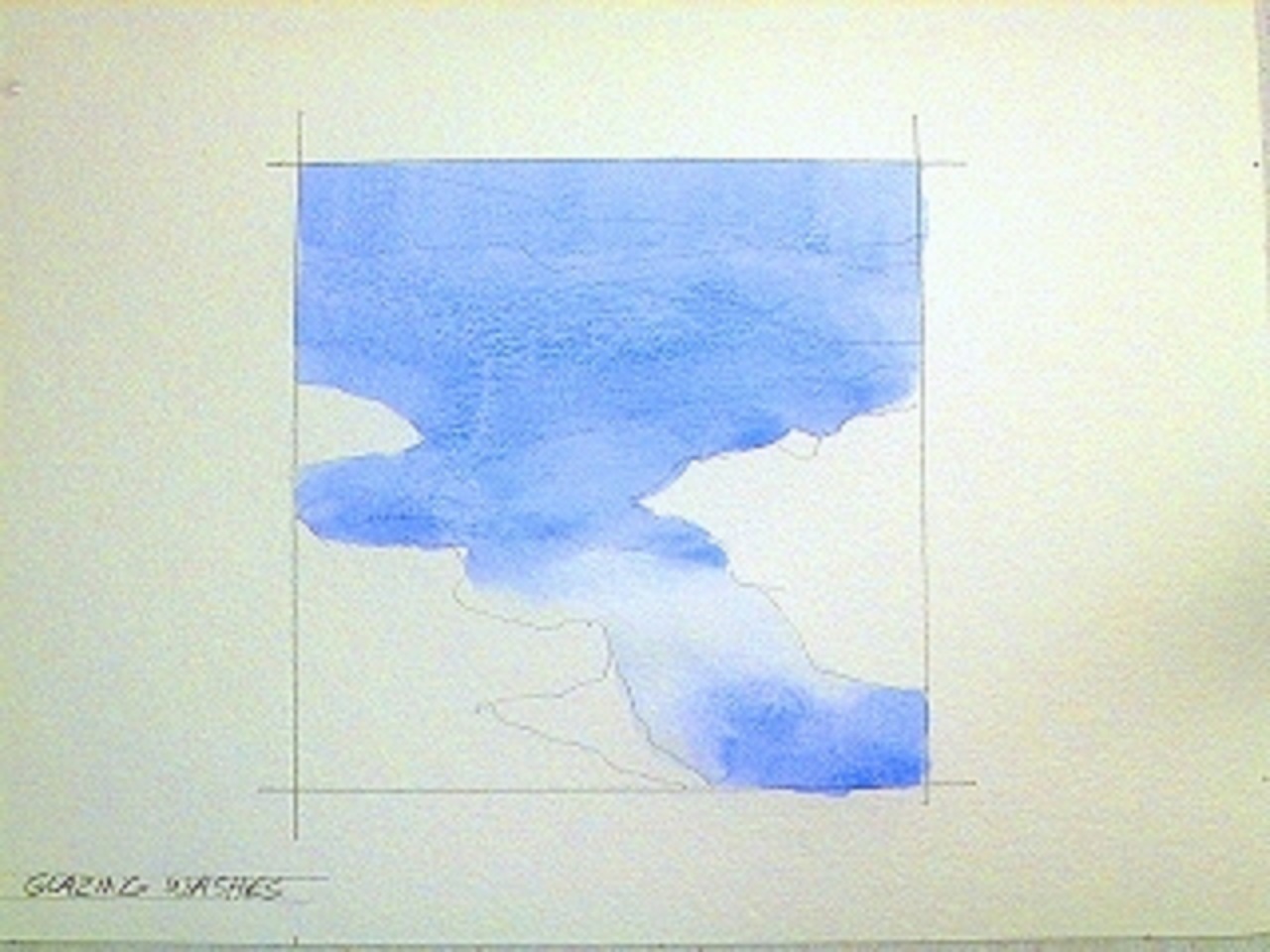 Using my 1" flat red sable brush I used a Cobalt Blue wash to block in the sky, mountains, and river area. I broke up the wash and added some clear water to soften the area that would be a waterfall.
Using my 1" flat red sable brush I used a Cobalt Blue wash to block in the sky, mountains, and river area. I broke up the wash and added some clear water to soften the area that would be a waterfall.
A mountain and red clouds
This lesson is designed to be as obvious as possible. Using bright transparent colors allows you to see how each subsequent wash is affected by those washes lying under it. Plus it allowed me to play with a new style of painting. Using the same 1" brush I mixed a transparent wash of Permanent Rose and painted a band of red clouds across the sky area. Rinsing my brush I mixed up a light wash of Cadmium Yellow Light and started painted the mountain area. I continued to the foreground and layed in a large yellow underwash.
I got the blues
Staying with the 1" flat red sable I then used a light Ultramarine Blue and Cobalt Blue mix to block in a mountain horizon and negatively define the background smaller yellow hill. For some reason, after I undercut the background yellow hill with blue, I then pulled a blue stroke straight down and cut the left corner in and lifted off with a flip. TIP 1: Allow each wash time to dry before overlaying the next color. You can use a blow dryer to effectively and safely dry your painting: Low setting, at least 10" away from surface, keep it moving, NO STEAM!
More color!
Same brush, different color. Needing to detract and balance the blue I had just finished, and making some interesting colors along the way, I mixed a straight wash of cadmium orange. I made orange banks in the foreground and then laid the orange over the rose and blue in the sky. You'll notice the jewel-like qualities of working with pure colors in a transparent manner. The glazed wash could just as easily be a faint muted gray on a solitary rock in a large, photorealistic landscape painting.
Hey! A different brush
Switching to my #8 round red sable I mixed up a very strong Cobalt Blue wash and strengthened the line of mountains at the horizon, varying the width by twisting and changing pressure on the brush as I went.
Creating on the fly
Using the same #8 red sable and Cobalt Blue wash I started playing in the waterfall after stopping on a far bank. Sometimes visual clichés are your friends, a few blue circles at the bottom of an apparent blue hill can become the bottom of a waterfall. Rinsing well, I made a puddle of Cadmium Yellow Medium and used that to paint some areas on the banks and some repetitive circles inside the blue on the bottom left.
A few more bubbles
After the previous washes dried I used varying values of Dioxazine Purple to add color variety to the foreground waterfall bubbles.
A consideration and a deep breath
I wanted some major elements to start pulling this thing together so of course I though: trees. I rummaged around my studio and found items I could trace circles off of—I found three different sizes. Using the #8 round red sable I mixed up some bright, transparent Sap Green and painted three circles.
Flora and lumberjacks
Staying with the same brush, I mixed a light wash of Cadmium Red Medium and layed the lumber under the lovely green foliage. Rinsing and picking up some Cobalt Blue, I added some minor accents on the water near the background and foreground banks as well as a shape in the sky. A small orange rectangluar area was added to the left foreground. I then alternately used Cobalt Blue, Permanent Rose, and Sap Green washes to paint some icons of grass randomly around the foreground.
Details To Final Painting
Permanent Rose and Cadmium Red Medium were used to add the final details. The trees were found to be fruit trees with red fruit, some on the ground. And each trees trunk was striped like a barber's pole. If you look closely at the enlarged version of the finished painting, you can see how each layer of paint you apply affects all that came before. Values change for the darker by default, but the colors created by glazing washes over one another can be truly beautiful and effective.
